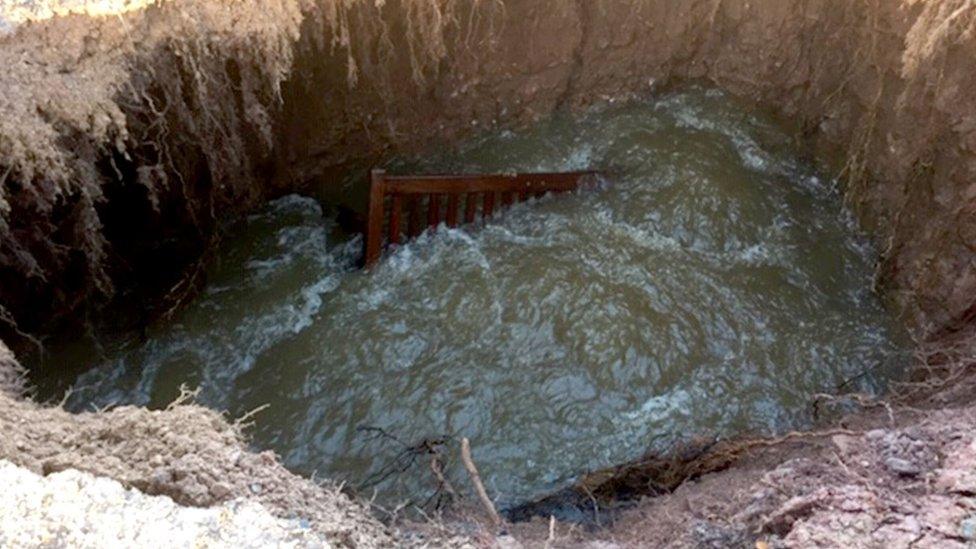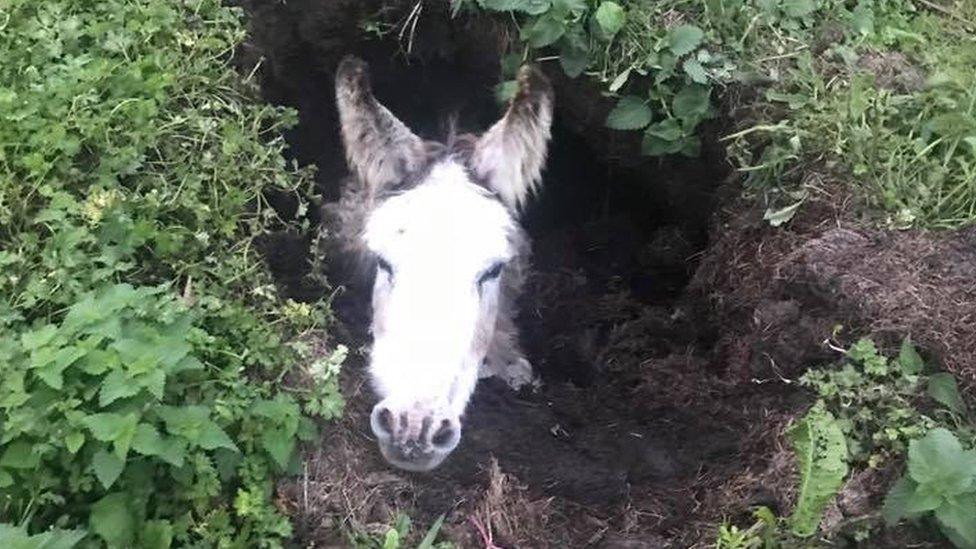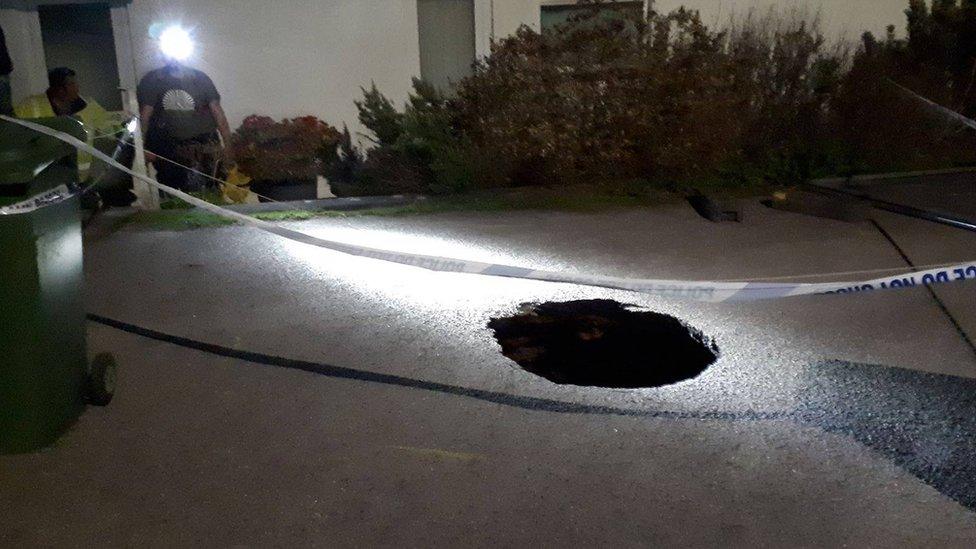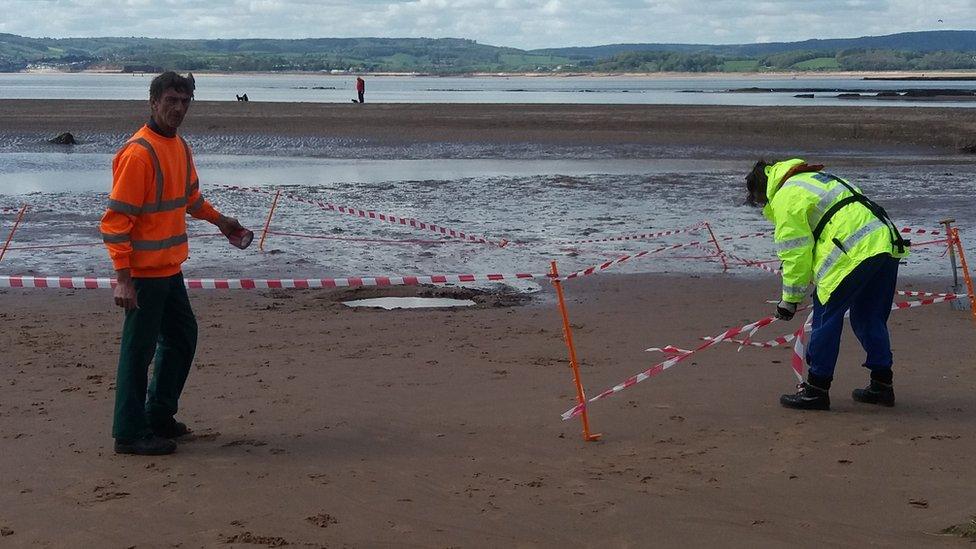Memorial bench disappears into Exeter riverbank sinkhole
- Published

Officials say they are trying to retrieve the bench safely from the hole
A 13ft (4m) long sinkhole has opened up on a city riverbank swallowing a memorial bench.
The hole appeared near Exeter's St James Weir on the River Exe on Tuesday night after heavy rain in the area.
The local council said it was "working hard" to retrieve the bench safely, stabilise the bank and fill the hole.
Officials are warning the public to stay away from the area while work to make the site safe is carried out.
In a post on Twitter, the council said: "A memorial bench has ended up at the bottom of a sinkhole and our staff are working hard to retrieve it safely so it can be used again."
A council spokesman said the bench had only just been installed and the authority was trying to contact the family who paid for it.
A full assessment of the hole, which is also 10ft wide (3m) will be carried out when the level of the River Exe has dropped.
Allow X content?
This article contains content provided by X. We ask for your permission before anything is loaded, as they may be using cookies and other technologies. You may want to read X’s cookie policy, external and privacy policy, external before accepting. To view this content choose ‘accept and continue’.
Sinkholes are often caused by an abnormal amount of water seeping into the ground but they are difficult to predict.
Water absorbs carbon dioxide in the earth and becomes acidic, which dissolves soluble rock such as chalk or limestone, with the ground eventually giving way.
Heavy rainfall, burst water mains and drainage all increase the likelihood of sinkholes appearing.
They can also occur in areas where there has been mining activity in the past.
- Published22 September 2018

- Published29 April 2018

- Published27 April 2017
